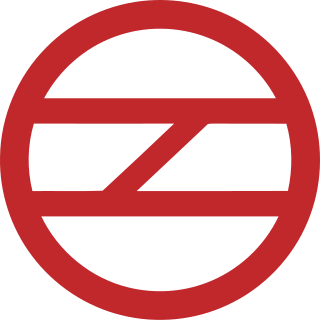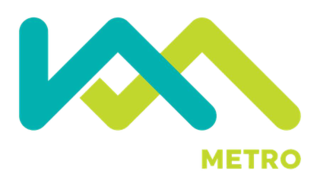
Ircon International, or Indian Railway Construction International Limited (IRCON), is an Indian engineering & construction corporation, specialized in transport infrastructure. The public sector undertaking was established in 1976, by the Indian Railways under the Indian Companies Act 1956. IRCON was registered as the Indian Railway Construction International Limited, a wholly owned entity of the Indian Railways. Its primary charter was the construction of railway projects in India and abroad. Ircon has since diversified into other transport and infrastructure segments and with its expanded scope of operations around the world, the name was changed to Indian Railway International Ltd. in October 1995.

Delhi Metro Rail Corporation (DMRC) is a centre-state joint venture that operates the Delhi Metro and Noida Metro. The Delhi Metro Rail Corporation is also involved in the planning and implementation of metro rail, monorail, and high-speed rail projects in India, and abroad. The work of the Delhi Metro Rail Corporation is fragmented into various parts which are controlled by directors under the direction of a managing director.

The Kochi Metro is a rapid transit system serving the city of Kochi and the wider Kochi Metropolitan Region in Kerala, India. It was opened to the public within four years of starting construction, making it one of the fastest completed metro projects in India. The Kochi metro project is the first metro system in the country which connects rail, road and water transport facilities. It is also the first metro rail system in India to be operated using the Communication-Based Train Control (CBTC) signalling system, which requires minimum human intervention. The Kochi Water Metro is integrated with the Kochi Metro, which serves as a feeder service to the suburbs along the rivers where transport accessibility is limited.

Bengaluru Suburban Railway is an under-construction suburban rail network for the city of Bangalore. A suburban rail system for the city was first proposed in 1983. Since then, several different route proposals were made but no suburban rail project took shape. It was finally approved in the 2019 Railway Budget.
Chandigarh Metro is an approved rapid transit system to serve the Chandigarh Capital Region, which includes Chandigarh and adjacent areas in Punjab and Haryana states of India. In Phase-1, to be progressively built and operationalised between 2027 and 2034, 3 lines will connect tri-cities of Chandigarh, Mohali in Punjab and Panchkula in Haryana. Phase-2, to be constructed after 2034, will connect Pinjore in Haryana and further expand the network in Mohali with 2 more lines. The project, which was initially scrapped in 2017 due to low financial viability, was approved in March 2023 and received formal clearance in July 2023 from the governments of Punjab and Haryana after a Detailed Project Report (DPR) was created.

Urban rail transit in India plays an important role in intracity transportation in the major cities which are highly populated. It consists of rapid transit, suburban rail, monorail, and tram systems.

Kolkata Metro Rail Corporation (KMRC) is a Government of India enterprise formed in 2008. The agency was formed to oversee the implementing Kolkata Metro Line 2, also known as East West Metro, connecting the twin cities Kolkata and Howrah. The metro rail route is partly underground including the part that will be under the river Ganges. The 16.6 km route has six station each in underground and elevated portions. The terminal stations are Salt Lake Sector V and the Howrah Maidan. The elevated stretch started operations on 13 February 2020.

The Delhi Metro is a mass rapid transit system which serves Delhi and its adjoining satellite cities, such as Ghaziabad, Faridabad, Gurugram, Noida and Bahadurgarh, in the National Capital Region of India. The system consists of 10 colour-coded lines serving 256 stations, with a total length of 350.42 kilometres (217.74 mi). It is India's largest and busiest metro rail system and the second-oldest, after the Kolkata Metro. The metro has a mix of underground, at-grade, and elevated stations using broad-gauge and standard-gauge tracks. The metro makes over 4,300 trips daily.

Patna Metro (Patna MRTS) is a rapid transit system being constructed in the city of Patna, India. Construction will be completed over five phases, and the transit system would be owned and operated by the state-run Patna Metro Rail Corporation. In the first phase, five stations of Patna Metro will be operational by March 2025. Patna MRTS, constructed under a public-private partnership model, is estimated to cost ₹133,657.7 million (US$1.7 billion). This cost excludes land acquisition cost, which will be paid for by the Bihar government. The first phase (consisting of the east–west and north–south corridors) will include both a 15.36 km (9.54 mi) elevated track and a 16.30 km (10.13 mi) underground track.

Kozhikode Light Metro is a proposed Light Metro system for the city of Kozhikode (Calicut), in India. In 2010, the State government explored the possibility of implementing a metro rail project for Kozhikode city and its suburbs. The proposal was to have a corridor connecting Meenchanda to the Kozhikode Medical College Hospital through the heart of the city. An inception report was submitted by a Bangalore-based consultant, Wilber Smith, on the detailed feasibility study on the prospect of implementing the Mass Rapid Transport System (MRTS) and Light Rail Transit System (LRTS) in the city. However, the project has been scrapped to be replaced by Kozhikode Monorail project.

NBCC (India) Limited, formerly known as National Buildings Construction Corporation is a public sector undertaking (PSU) company under the Ministry of Housing and Urban Affairs, Government of India.

The Uttar Pradesh Metro Rail Corporation(UPMRC) is a joint venture company that operates the Lucknow Metro, Agra Metro and Kanpur Metro.The Varanasi Metro, Prayagraj Metro, Gorakhpur Metro, and Bareilly Metro are proposed by UPMRC. The company's headquarters is at Vipin Khand, Gomti Nagar in Lucknow, Uttar Pradesh, India.

The Housing and Urban Development Corporation Limited, abbreviated as HUDCO, is an Indian public sector undertaking engaged in housing finance and infrastructure project finance. The Govt Grants Navratna Status to PSU on April 18,2024.
Public Sector Undertakings (PSU) or Public Sector Enterprises (PSE) in India are government-owned enterprises in which 51 percent or more share capital is held by the Government of India or state governments or joint ventures between multiple Public Sector Enterprises. Depending on the level of government ownership, they can be broadly categorised as Central PSUs or State PSUs. These entities include government companies, statutory corporations, banking institutions, and departmentally run companies. PSUs are officially classified into three categories, which are Central Public Sector Enterprises (CPSE) and Public Sector Banks (PSB) owned by the central government or other CPSEs/PSBs, and State Level Public Enterprises (SLPE) owned by state governments or other SLPEs. CPSE is further classified into Strategic Sector and Non-Strategic Sector. Depending on their financial performance and progress, CPSEs are granted the status of Maharatna, Navaratna, and Miniratna.
The Srinagar Metro is a light rail transit planned for the city of Srinagar, Jammu and Kashmir. The plans for the Srinagar Metro have been finalised with the work expected to start once the project gets nod from union cabinet. The proposed network will have two corridors. Each corridor of Srinagar metro will have 12 stations each with the total cost expected to be ₹5,559 crore.
The Meerut Metro is an under-construction rapid transit system, which will serve the city of Meerut, Uttar Pradesh, India. It is being built in two phases, out of which the first phase with the first line will cover 23.6 km (14.7 mi) with 13 stations, from Modipuram to Meerut South. It will have nine elevated, three underground stations, one at-grade station as the depot station at Modipuram, and four stations integrated with the Delhi–Meerut RRTS on a single corridor, making the metro the first such rapid transit system in India to be merged directly with a regional railway system. The second phase will include a second line covering 15 km (9.3 mi) from Shradhapuri Phase-II to Jagrati Vihar, with 12 stations, out of which seven will elevated and five will be underground, thereby taking the overall length to 38.6 km (24.0 mi). The metro will also be the fastest metro of India, at an operational speed of 120 km/h (75 mph).

The Varanasi Metro is a light rail transit system proposed for the city of Varanasi, Uttar Pradesh, India. The proposed system consists of 2 corridors that span from BHEL to Banaras Hindu University (19.35 km) and Benia Bagh to Sarnath (9.885 km). The feasibility study of the project was done by RITES and was completed in June 2015.

The Delhi–Meerut Regional Rapid Transit System is a partially operational 82.15 km (51.05 mi)-long semi high-speed rail and regional transit corridor that will connect the National Capital Region (NCR) cities of Delhi, Ghaziabad and Meerut. It is the first of the four rapid rail corridors planned under the first phase of the RapidX project managed by the National Capital Region Transport Corporation (NCRTC). Designed to allow a maximum speed of 180 km/h (110 mph), the distance between Delhi and Meerut will be covered in less than 60 minutes. The project is being executed at a cost of ₹30,274 crore (US$3.8 billion). It will start from Jangpura as the starting station, run through Sarai Kale Khan, the terminal for the three planned corridors, both in Delhi, and end in Modipuram in Meerut. It will have 16 stations and two depots at Duhai and Modipuram.

Urban Mass Transit Company Limited (UMTC) is an urban transport consultancy company to develop sustainable urban mobility methods and solutions. It focuses on planning, designing, project management and implementation supervision of urban transportation projects. It was founded on 13 April 1993 as a partnership between Ministry of Housing and Urban Affairs, Andhra Pradesh State Road Transport Corporation and Infrastructure Leasing & Financial Services Limited (IL&FS).
The Jammu Metro is a proposed light rail transit system for the city of Jammu in the Indian Union Territory of Jammu and Kashmir. The project has been proposed by the Housing and Urban Development Department of the Government of Jammu and Kashmir and is estimated to cost Rs. 4825 crores in phase 1. The proposed system will have a total route length of 43.50 km, consisting of 4 lines and 22 stations, and will be completed in two phases. The expected completion date for the project is 2026.














